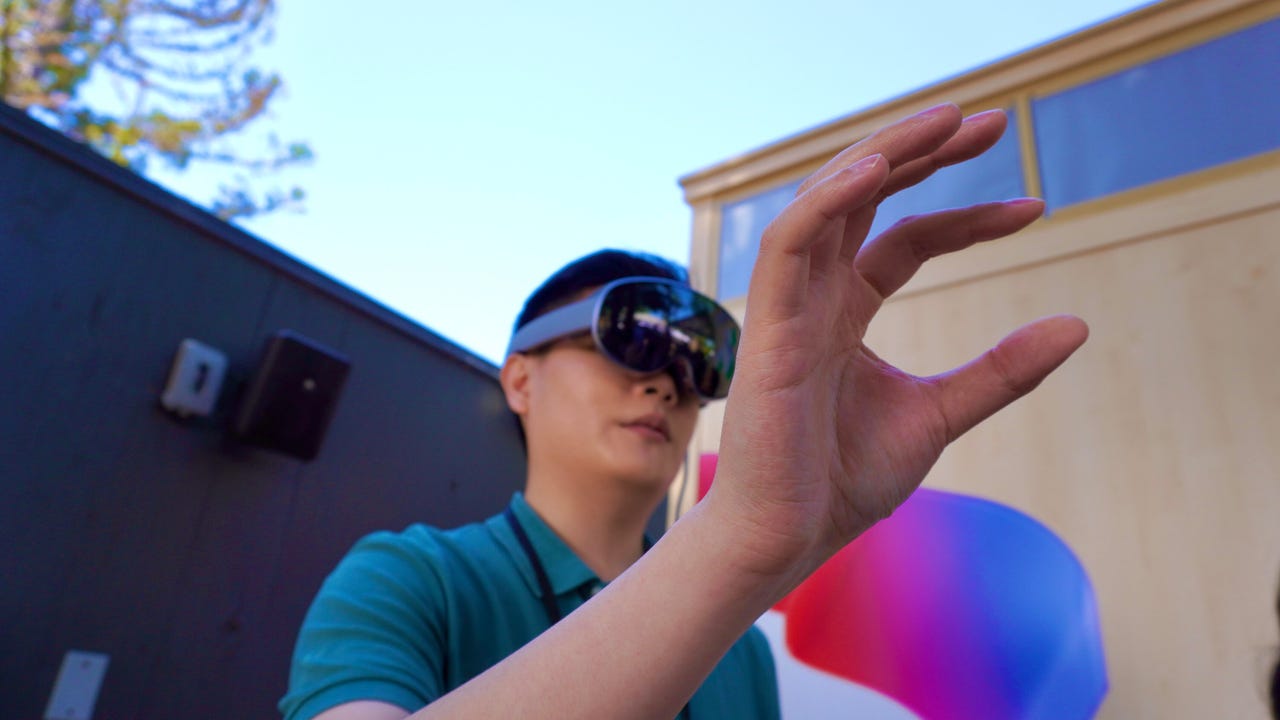
Hand gestures on the Project Moohan headset demoed by ZDNET’s Kerry Wan at Google I/O.
Sabrina Ortiz/ZDNET
Since the onset of the command line, the way humans have interacted with their computers has been restricted to a keyboard. Meta’s new wristband seeks to change that.
Last week, Reality Labs at Meta, the team responsible for developing the company’s AR and VR offerings, published a paper in Nature detailing plans for a noninvasive wristband that uses electrical signals from the user’s body for human-computer interactions.
How it works
The wristband, meant to be wireless and comfortable, allows users to navigate the world around them in different neuromotor ways. These include 1D continuous navigation, similar to pointing a laser pointer based on their wrist posture; gesture detection, such as finger pinches; and handwriting recognition options, which allow users to draw using gestures with their neuromuscular signals, according to the paper.
Also: Can Amazon finally make AI wearables happen? This buzzy new device could be its best bet
Unlike other gesture-based tech, these gestures aren’t read by a camera system or other sensors. Rather, it predicts the user’s intent from their neuromuscular signals using a measure of muscle activation via electrical signals sent from their brain when they make certain movements. This process is known as surface electromyography (sEMG), and is also used for prosthetic control.
Meta VP of research Thomas Reardon told The New York Times that with practice, just the intent of moving is enough to produce the motion necessary to make the action happen on the computer.
Why it matters
ZDNET’s Managing Reviews Editor Kerry Wan has tested many XR/VR headsets and finds that the type of wristband Meta is working on would move the space forward significantly.
“A wristband accessory capable of processing muscle movement at such a granular level would greatly enhance VR/XR applications,” said Wan. “These include more commercial use cases like gaming and interacting with virtual characters online, but they also expand to professional work like graphics design and content creation.”
Other companies are developing similar products to remove friction between users and their devices. For example, the Mudra Link is a neural wristband that leverages proprietary sensors and AI algorithms to allow users to interact with their devices hands-free.
I demoed the Mudra Link at CES, and it was easy to use and a fun change of pace from touching a screen or typing into a keyboard. This seamless interaction between users and their devices is especially welcomed in VR/XR applications, where an obstacle to comfortable use is getting the hang of the gestures or the handheld controls.
Beyond these uses, it could also offer new opportunities for a wider audience with greater accessibility.
“We’ve seen an uptick in digital input accessories for VR, like the Logitech MX Ink, but to be able to make precise actions with just your fingers is the most natural, frictionless next step — especially from an accessibility standpoint,” added Wan.
Meta has yet to announce an official release date.
Get the morning’s top stories in your inbox each day with our Tech Today newsletter.
